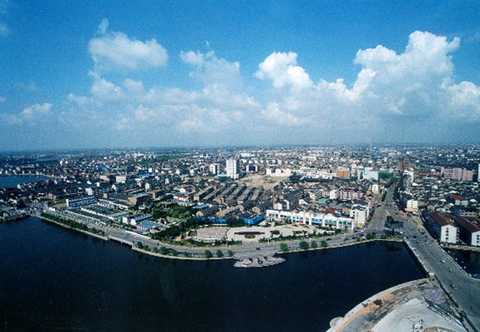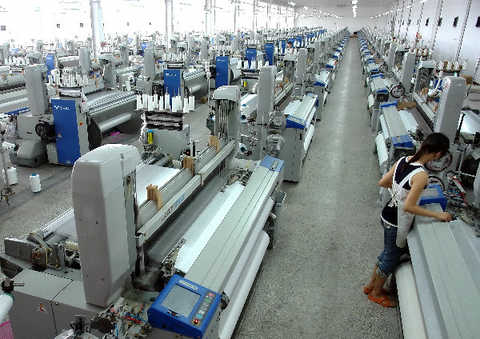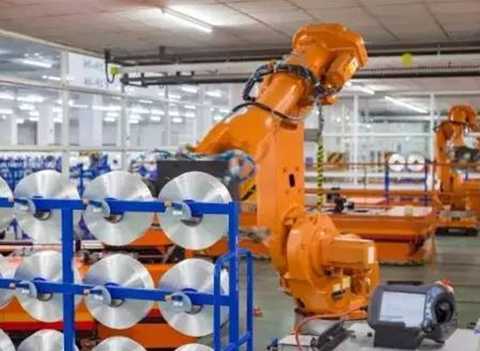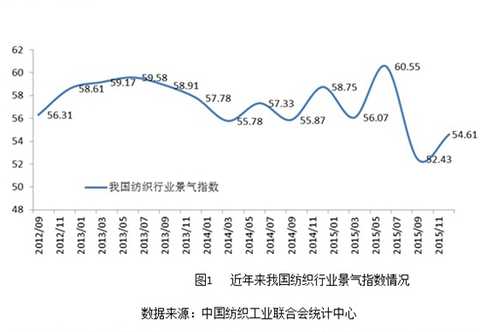Although the macroeconomic environment is still grim, for Wu Qi, deputy head of Suzhou Wujiang District, this year is a year that can be a little relieved.
"Since the end of last year, our textile industry has begun to pick up, and this year has been fully improved." At the 2016 China Wujiang Investment and Trade Fair in October, Wu Qi told the First Financial Reporter. He skillfully reported several data: "This year Wujiang's general public budget revenue has increased by more than 13%, and the tax ratio (tax revenue accounted for the proportion of general public budget revenue) exceeded 90%, which is the best in the past five years. In the past two years, the amount of tax paid by leading enterprises has risen sharply, the fundamentals of enterprises are very good, and the growth is relatively healthy."
The tax ratio is an indicator used to assess the quality of economic development. The higher the tax ratio, the more the government's money comes from the economic behavior of enterprises and individuals, the more able to prove the vitality and competitiveness of economic growth.
Wu Jiang, a region with a textile industry as a pillar industry. As the national textile heavy area and the largest chemical fiber fabric gathering area in the country, Wujiang in the south of Suzhou has more than 5,000 textile weaving enterprises, with an annual spinning capacity of nearly 5 million tons, annual weaving capacity of 20 billion meters and dyeing and finishing capacity of 5 billion meters. There are 20 national-level textile development bases in the region, which is the region with the largest number of “textile national brands†in the country.

It is such a region that relies on the textile industry and gathers small and medium-sized enterprises. It has experienced a period of low labor costs, overcapacity, loss of orders, and low profit margins. In the passive and active transformation and exploration, it gradually stepped out of the “mire pool†and began to actively The rising trend of growth.
This is a transformational sample of the traditional textile industry. It is not a full-fledged reality but also has the vitality and light of regional and corporate transformation.
Going to the high end of the value chain: producing 50 yuan a meter of cloth
Wujiang's Shengze Town is called China's largest textile production base and is a national-level silk spark-intensive area. The local production of chemical fiber silk accounts for one tenth of the country, and the production of chemical fiber fabrics accounts for one quarter of the country's total. The annual output of various fabrics can be 2 meters per person worldwide.
In the 2016 Shanghai Wujiang High-tech Zone (Shengze Town) textile industry transformation and upgrading Shanghai briefing session, Zhao Zeguan, deputy secretary of the Shengze Town Party Committee, told the First Financial Reporter that the transformation of the local textile industry began in 2014. In the textile towns that experienced a lot of investment at that time, there was a significant overcapacity.
“There were nearly 140,000 water jet looms in the whole town. In fact, they all produce low-end products. The price itself is only 1~2 yuan/m. There used to be about 10% profit, but it has been since the year before. There is no profit or even negative profit." Zhao Juguan told reporters that with the development of Southeast Asian and African companies, many orders began to flow to these lower cost places.
In this new situation, the Shengze Town Government is determined to begin its transformation. “No transformation can't be done.†Zhao Juguan said, “The town government began to require companies to produce fabrics with a price of at least 5 yuan a meter, and through a series of incentives to encourage enterprises to eliminate backward production capacity, transformation and upgrade to produce higher value-added products. â€

Zhao Juguan said that after more than two years of hard work, the local textile companies' current profit margins have changed significantly. He provided the first financial reporter with such a data: "In the first half of this year, the average profit rate of industrial-scale enterprises in our entire town reached 18%. This is only an average figure. Some enterprises have already produced 50 yuan a meter. The cloth has a higher added value."
According to official data released before, in the first 11 months of 2015, the profits of enterprises above the scale of Shengze increased by 113.9% year-on-year, the tax revenue of key enterprises with tax revenue of over 1 million yuan increased by 20.52%, and the industrial electricity consumption increased by 3.2%.
Hengli Group is the largest enterprise in Shengze Town and the largest weaving enterprise in the world. On the “2016 China Private Enterprises Top 500†list released by the National Federation of Industry and Commerce, Hengli Group ranked eighth. The general manager of the company, Guo Yujun, told the First Financial Reporter that the gross profit of the company's textile products has reached 26%. The main reason for the increase in profitability is “production by mass and new product guidance and raw material changesâ€. According to Guo Yujun, the company now has more than 500 new products on the market.
What followed was the enhancement of Shengze's financial resources. In the first half of this year, the town's full-caliber fiscal revenue reached 2.973 billion yuan, a year-on-year increase of 22.09%.
30 billion intelligent transformation, the introduction of imported machinery
Despite the challenges of factors such as changes in the world economic and trade situation and advanced manufacturing models, the textile industry has always been the pillar industry of China's national economy and an important civilian production industry. In May 2015, the State Council officially issued the "Made in China 2025", clearly proposing to promote the textile intelligent manufacturing process, accelerate the research and development of textile new materials, and strengthen the basic capabilities of the textile industry. According to the data of the National Bureau of Statistics, the main business income of China's textile industry in 2015 reached 707.3 billion yuan.
In addition to developing new products and increasing the added value of products, Wujiang's local textile companies have also begun to implement “machine substitution†in large quantities, and integrate automation and informationization to achieve intelligent weaving.
“The number of workers in the textile industry has been reduced by at least one-third. The company uses a large number of robotic arms.†Zhao Juguan said, “For example, in the workshop of vortex spinning, you can hardly see workers. If you use the original scale, you can achieve a certain output. It takes about 2,000 people, but now 500 people are not there."
Guo Yujun said that the Hengli Group's textile factory began to promote intelligent weaving from the end of 2013. “In the past nine months of this year, the output value has increased by 35%. The machine can be operated 24 hours after the substitution, and the error rate and stability are all available. Improvements can also make products more closely follow the rhythm of market changes, and production efficiency has increased by 7%."
In the workshop of the chemical fiber factory of Hengli Group, the reporter saw a large number of robotic arms. The spokesman of Hengli Group Co., Ltd. said that the software systems of these robot arms are independently developed by the company. In terms of R&D investment, Hengli Group's R&D investment in the textile sector accounts for approximately 2.5% to 3% of the annual output value.

According to Zhao Juguan, in order to promote the transformation and upgrading of Shengze industry, the equipment purchase amount of the town will reach 30 billion yuan within 3 to 5 years. Among them, 60,000 high-end water jet looms, according to each 200,000, a total of 12 billion yuan; 20,000 air jet looms, each 400,000 yuan, a total of 8 billion yuan; 10,000 high-end knitting machines, each 100 Ten thousand, a total of 10 billion yuan.
At present, the water jet loom in Shengze Town has been reduced to 110,000 units, of which 90,000 are low-end water jet loom. The operating rate of these loom is about 80%, and the overcapacity is more serious. The town plans to compress the water jet loom to more than 80,000 units in three to five years, and most of the 80,000 units are replaced by high-end water jet loom.
Zhao Juguan told the First Financial Reporter that the effect of the planned purchase of 60,000 high-end water jet looms will definitely be better than the effect of the original 80,000 looms. "So, the output of 60,000 high-end machines and the previous 80,000 units are similar, but the output value will increase by about 30% compared with the original 80,000 units."
At present, more than 2 billion meters of 8.5 billion meters of fabric produced annually in Shengze Town are various popular fabrics. In order to make the world's largest fabric base the best quality and highest quality fabric procurement base, Zhao Juguan said that Shengze also invited various designers to enter Shengze, and even held the Italian Fashion Week, trying to explore the establishment of cross-regional industries. Alliance, and even international cooperation.
Shengze Town, which specializes in holding textile briefings in Shanghai, is also looking forward to obtaining more information and resources from Shanghai, attracting textile machinery enterprises to settle in Shengze and cultivate the development of the local textile machinery industry. Currently, local textile machines rely mainly on imports.
Financing problems remain to be solved
While eliminating backward production capacity, it is necessary to build new production capacity. This is the transformation experience of Zhao Juguan who has experienced the whole process of local industrial transformation.
However, in the process of building new capacity and upgrading equipment, enterprises will inevitably encounter financial problems. How can textile enterprises that have previously been meager profits and are classified as traditional industries go through this hurdle?
Wu Qi told the reporter that the most common problem for enterprises is financing difficulties and financing. "Although from the central government to the local governments, financial institutions are required to invest money in the real economy, but this problem has not yet been fundamentally solve".
Therefore, in addition to giving certain support funds from the aspects of intelligent transformation, the local government has also set up a platform for cooperation between government and enterprise banks to create the most suitable investment and financing environment for SMEs. Wu Qi also said that the market is still dominated by enterprises, so it will continue to use market-oriented mechanisms and means to allocate resources. “The government is more about creating an environment that encourages the transformation and upgrading of enterprises. It is not suitable for interfering with corporate decisions,†he said.
Zhao Juguan told reporters that compared with a few years ago, banks’ lending to textile companies must have been reduced. “Although the bank is very encouraged to introduce new machines, it is still tightening overall.†According to his estimation, about one-third of the banks are tightening their loans. These are mainly private banks. The tight loan ratio is about one-third, which has caused some companies to have financial difficulties.
Zhao Juguan said: "Between 2014 and 2015, there were about 36 companies that closed down because of the tightening of loans." According to the number of 2,500 companies in Shengze Town, the number of enterprises that closed down accounted for 1.44%.

Create a financial town and logistics town
For the long-term economic development, Wu Jiang, which is mainly engaged in manufacturing and private enterprises, has recently begun to actively develop the service industry.
On October 17, 25 projects including Wujiang “Financial Town†started construction, with a total investment of about 28.3 billion yuan. Wujiang “financial townâ€, the financial town of Suzhou Bay, was initiated by 12 institutions including Legend Holdings, Greenland Financial Holdings, CITIC Group, Soochow Securities 601555, and shares. It hopes to build a professional eco-finance community, wealth and asset management. Area.
In addition to the financial town, Wujiang Taihu New City has also created a new industrial carrier such as Suzhou Bay Science Park and Software Park. Wujiang Pingwang Town has used the advantage of geographical location to build a logistics town, namely Suzhou Zhonghao International Logistics Technology Park.
"Wujiang itself is mainly based on manufacturing industry. Advanced manufacturing industry is always our industrial base and development orientation. At the same time, we must vigorously develop modern service industry with production service industry as the main content." Wu Qi said. "Talent is the key to development. Because Wujiang has great demand for high-level talents, it is necessary to build Suzhou Bay Science and Technology City. It is to attract more innovative and entrepreneurial talents through the establishment of carriers, and provide powerful support for enterprise transformation and upgrading. Platform support and intellectual support."
Fang Xianshi, deputy mayor of Wujiang Pingwang Town, told the First Financial Reporter that although Pingwang Town wanted to build a logistics technology park, logistics was only a means, and the ultimate goal was to achieve the flourishing development of modern commerce. “The platform of intelligent logistics and informationization plays an important role, and the overall logistics efficiency will also be improved through technological means.â€
According to Fang Xianshi, the top ten enterprises in the logistics industry have already visited the logistics towns. “They basically come to us,†they also expressed their intention to settle in. At present, the logistics town has introduced the company's logistics infrastructure giant Gloss, which has a total investment of about 55 million US dollars.
(Editor: Ma Jun HN022)
Milson Company Limited , https://www.milson-packing.com